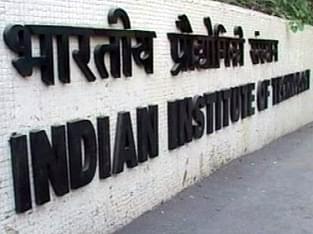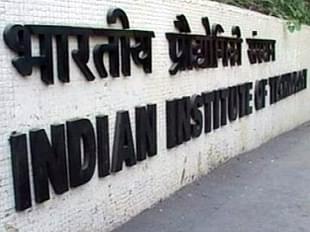Commentary
The Falling Standards of the IIT-JEE
Kesava
May 26, 2011, 01:59 PM | Updated Apr 29, 2016, 03:04 PM IST
Save & read from anywhere!
Bookmark stories for easy access on any device or the Swarajya app.



This year, as many as 5 lakh candidates appeared for IIT JEE examination. The most important reason behind this enthusiasm is towering success of IIT graduates in various walks of life . Clearing IIT JEE and subsequently graduating from IIT tends to be a great door opener for excellent opportunities. Indian society perceives success at JEE and in graduating from IIT as success in life. Success at IIT JEE is also seen as a reliable route to a career as entrepreneur. So obviously Indians especially middle classes, show a tremendous degree of enthusiasm about IIT JEE. Given this primacy of IIT-JEE it lends itself to political meddling especially given the continued stranglehold of government on larger part of higher education landscape. Current degradation in standards of IIT JEE paper shows that political machinery is working full time to ensure the opportunity to woo the public is not lost. But at what cost? Let us take a look.
Consistency that IIT JEE is famous for
Lakhs of students work day and night for several years starting from their school days to crack IIT JEE examination. Every student gets only two chances to crack IIT JEE. The competition is cut throat. One story from IIT Kanpur that is told as a proof of the sincerity of people at IIT goes as follows
Some time in 1990s, IIT Kanpur was to convene IIT JEE exam. It so happened that one of the professor’s son was writing the exam the same year. Holding it his moral responsibility, the professor took a long leave for one full year. He returned to the institute after his son successfully cracked the examination.
Truth behind this story can be contested but that such a story is told to young students in several preparatory institutes across India as a means to motivate students is a source of amazement and is testimony of sincerity of people at IITs. In fact, the only incident of a IIT JEE paper leak so far, was cause of severe consternation across India. That an IIT JEE paper could be leaked by an obscure preparatory institute in Lucknow left people flabbergasted. IIT JEE papers also record very low incidents of errata. Such is the amazing consistency of IIT JEE. Even with this consistency, errors were recorded in IIT JEE paper this year. With AIEEE paper getting leaked, IIT JEE paper recording errors, the question that comes to the mind is “whats going on?”
Something wrong with IIT JEE paper?
IIT JEE papers for the past three years have been extremely poor in testing students’ caliber in applying concepts. The equation seems to be now to know, rather than to apply. Mathematics teachers and several students commented that Mathematics paper was a cakewalk. Last year was no different. Several found Chemistry paper to be of same standard. Last year too similar reactions were recorded. For instance, one finds it very interesting that several questions like these [ 1, 2,3, 4] in Mathematics section of paper 1 and several others like these [1, 2, 3, 4, 5] in Mathematics section of paper 2 are mere formula based substitutions. As argued earlier, IIT JEE is regarded as a tough examination to crack primarily because of the emphasis is on application of concepts, not on knowledge of concepts. One cursory look at Mathematics paper reveals several such loop holes. The story of “death of EAMCET examination in Andhra Pradesh” is to be taken seriously into consideration while understanding why testing knowledge of concepts alone is really not a way to ensure quality of engineers produced by the participating institutions. EAMCET at the time of its conception was a tough examination to crack in both Engineering and Medicine streams. Medicine held on to the quality level while Engineering stream lowered its guard owing to increasing number of Engineering institutions because of rise of IT/ITES based jobs. To ensure more people get into engineering, quality of examination was lowered by dividing questions into application, derivation, substitution types. The chain reaction led to increasing number of engineering colleges and further reduction in quality of questions, finally culminating in irrelevance of EAMCET for engineering stream. The decision to lower the quality of EAMCET Engineering examination had a major political motivation. Though the decision led to job creation, due to lack of any plan to create research oriented institutions, knowledge based jobs were not created. Skill based jobs were being created due to heavy demand from MNCs, but MNCs showed and still are showing interest due to low cost of operation. Like Narendra Modi said in his speech at India Today Conclave 2011, it is time for India to move to Knowledge based job creation. In fact, India is already late. A cursory look at how IIT JEE standard is being lowered steadily indicates a story similar to that of downfall of EAMCET. Following events with respect to IITs and IIT JEE must be taken seriously.
- OBC reservation was introduced in 2006.
- Number of IITs were doubled in 2009, in a single shot.
- IIT JEE saw an immediate dip in quality in 2010, which continued into 2011.
- Rare case of errors in IIT JEE paper happened in 2011.
One cannot ignore the obvious political equation in these series of events. Kapil Sibal is playing a dangerous game with Professional Engineering and Technology Education.
What could Kapil Sibal’s Game Plan be?
To a common Indian, entry into an IIT is the starting point of an easy climb to higher income rungs of society. The top priority of Middle Class Indian parents is to ensure their kids do their best in studies, so that it ultimately leads to entry into an IIT. This naturally becomes a very important point for politicians to exploit. Increase in number of IITs, reservations for OBCs and reservations for specific communities in faculty of these premium organizations indicates that government wants to increase number of people who enter these institutions. The hastiness with which number of seats increases from ~6000 to ~8000, disregarding the grievances of management and faculty about acute shortage of infrastructure discloses the real intentions of government of India. And to add to all that is wrong, IITs are mulling simpler selection system. Notice this line in the article:
Sources has also informed that the Acharya committee, appointed by the HRD ministry last year, suggested admission on the basis of students’ combined score of the Class XII exams and a subjective test. However, it was struck down by the IIT council and a new committee was formed.
IIT faculty would never want to do away with subjective test. The reason for high quality input is the subjective test. Despite several changes in examination patterns, IITs never did away with subjective test. That the idea of “combined Standard XII marks and subjective test” was rejected, shows that government of India doesnt want the selection procedure to be tough, which means Government of India wants people to get admission into IIT easily without proving their skill with concepts. Kapil Sibal’s game plan seems to be to delude Indian public into feeling great about better chances of education at IITs for their kids. The long term consequences seem detrimental to not only the institution but also to the future candidates. For instance, one cannot ignore the fact that IITs are already choking with infrastructure shortage in terms of faculty, on campus residence, on campus facilities etc. The notion that “more IITs means more high quality engineering graduates” is wrong. The Indian Public may or may not realize this right now. But the realization will soon come about when faculty shortage, coupled with shortage of other infrastructure leads to low quality graduates and research output. The idea of increasing number of IITs is not wrong per se. The manner in which government of India handled the idea is wrong. Sudden increase in number of seats is not good. Contrast the manner in which an organization like BITS, Pilani expanded, over the past decade. BITS, Pilani opened a campus in Dubai in 2000. Four years later in 2004 in Goa and then again four years later in 2008 in Hyderabad. There is a planned manner in which they expanded their campuses. There is almost surgical precision in choice of locations. There is also careful movement of faculty from main campus in Pilani to other locations basically to keep faculty satisfied and reduce attrition, which is key to a successful academic organization.
What could be a better way to handle increasing enthusiasts of Engineering Education?
There is still good time to improve the situation. In fact, it is not very difficult at all. It only takes political will and no non-sense attitude while dealing with professional education. IITs, IISc, IIMs and such institutions should be treated as organizations which are fundamental functioning organs of society, not as part of Government or government undertakings. At the same time, other private institutions should be encouraged to improve standards to compete head-on with IITs, IISc etc. Even while doing so, it should be ensured that students dont suffer due to negligence of on campus living standards or financial stress. Thus, government’s best role in these organizations is monitoring “cash inflow and outflow”, not “candidate inflow and outflow”, and monitoring “on campus facilities”, not “on campus faculty”. Some of the ideas that could be considered are:
- Remove all government handles on IITs, IISc, IIMs in choosing faculty and admissions. Let them choose their faculty, students.
- Monitor only cash inflow and outflow. Monitor on campus living standards and fraud in finances, but not candidates entering or leaving the institutions.
- Stop increasing number of institutions in a mad rush. Prepare a proper long term expansion plan like BITS Pilani. When coupled with 1, it would ensure proper execution, despite change in government
- While leaving these organizations alone, ensure participating institutions in examinations like AIEEE increase their standards. Let participating organizations compete head-on with IITs etc., in quality of entering candidates so that healthy competitive environment exists in input and output of these organizations.
- Remove all plugs on salaries of the faculty and other staff involved. Let the administration of the organizations decide the best monetary compensation of the people involved.
These are five simple and easily implementable ideas that could work. However, expecting that government of India would implement these or their derivatives or any other ideas which could have similar effect, would be asking for too much. Reason being, these organizations indirectly are PR lobbies for the government of India. For instance, even to this day, concept of IIT is called “brainchild of Nehru” despite the failure of IITs to reach top spots in research output. One shouldn’t be surprised if in 2014 GE, Kapil Sibal claims that it was brave, courageous and farsighted UPA government which increased number of IITs, IIMs thus helping Middle Class live their dreams. Continuous assault on these premium institutions must stop. These organizations must come out of political equations. In that lies bright future of India’s professional education. Unless this happens, well, IIT JEE paper will continue to loose its quality and so would IITs.





